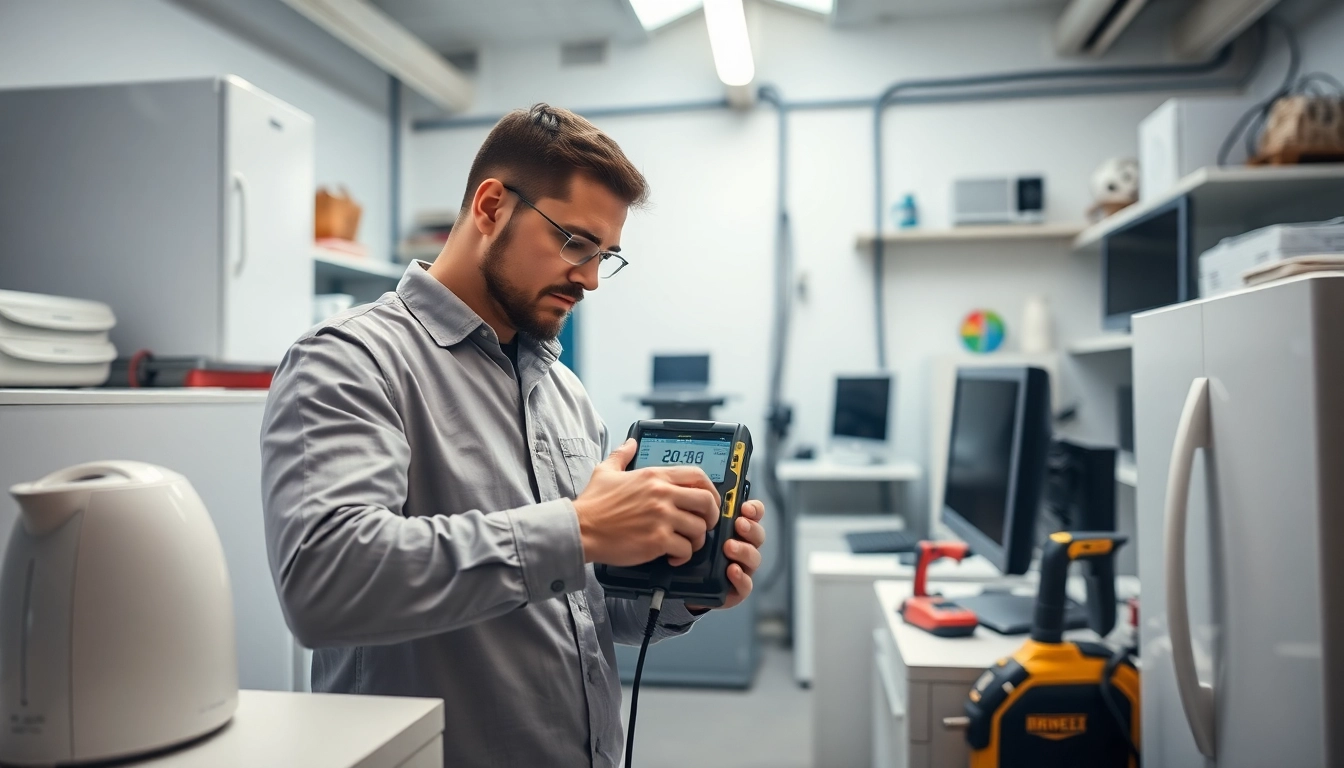Understanding PAT Testing in Cannock
What is PAT Testing?
Portable Appliance Testing (PAT) is a crucial process that involves checking electrical appliances and equipment to ensure they are safe to use. This testing is essential for businesses and organizations that use electrical appliances, ranging from office equipment to industrial machinery. In Cannock, as in the rest of the UK, PAT testing is not just a good practice; it’s often a legal requirement designed to protect both employers and employees from electrical hazards.
Why is PAT Testing Essential?
The primary objective of Pat testing Cannock is to prevent electrical accidents and ensure compliance with health and safety regulations. Regular PAT testing can help to:
- Reduce the Risk of Accidents: Faulty electrical equipment can lead to serious accidents, including electrical shocks and fires. Regular testing helps identify and rectify these risks.
- Enhance Company Reputation: Businesses that prioritize safety through regular PAT testing enhance their image and build trust with clients and employees.
- Ensure Compliance with Legislation: Various laws and regulations require organizations to ensure their electrical appliances are tested regularly. Non-compliance can lead to legal penalties.
- Save Costs: While there’s a minor expense associated with testing, it is far cheaper compared to the costs stemming from accidents and potential lawsuits.
Common Myths About PAT Testing
Despite the importance of PAT testing, several myths perpetuate misconceptions regarding its necessity and execution:
- Myth 1: PAT Testing is Required Annually: The requirement for annual testing depends on the type of equipment and its use. For some items, longer intervals may be acceptable.
- Myth 2: All Electrical Equipment Needs to Be Tested: Not all appliances require PAT testing; items like mobile phones and certain items not at risk of causing electric shock are exempt.
- Myth 3: Anyone Can Carry Out PAT Testing: Although anyone can technically conduct PAT testing, it must be performed by someone competent who has received appropriate training.
Choosing the Right PAT Testing Service in Cannock
What to Look for in a PAT Testing Company
Selecting a reliable PAT testing service is fundamental to the safety and compliance of your electrical appliances. Here are vital factors to consider:
- Qualifications and Certifications: Ensure the service provider has the necessary qualifications, such as City & Guilds certifications in PAT testing.
- Experience: Look for a company with a proven track record and experience in PAT testing, especially within your industry.
- Insurance: Confirm that the company is fully insured, as this protects you in the event of any mishaps during the testing process.
- Customer Support: A reliable provider should offer great customer support, with open lines of communication for questions or issues.
Comparing Prices and Packages for PAT Testing Cannock
Pricing for PAT testing services can vary significantly. It is pivotal to understand the different pricing models:
- Per Item: Many companies charge a fixed fee per item tested, which typically ranges between £1 and £2. Discounts may apply for large orders.
- Package Deals: Some providers offer package deals that include additional services like inspections of other electrical systems, which can save money.
- Flat Rates: Certain services may provide a flat-rate option for comprehensive testing, particularly for larger businesses with many appliances.
Customer Reviews and Testimonials
To gauge the reliability and quality of a PAT testing service, customer reviews and testimonials are invaluable. Potential clients can learn about other customers’ experiences, uncovering aspects such as the company’s efficiency, professionalism, and thoroughness. A reputable company will readily provide references or direct you to their review platforms for cross-referencing.
The PAT Testing Process Explained
Initial Assessment: Preparing for Testing
Before actual testing begins, a thorough initial assessment is conducted. This may involve:
- Cataloging all electrical appliances to be tested.
- Identifying potential risks based on the type and condition of appliances.
- Marking visible indications of appliances needing replacement or repair.
Testing Equipment Used in PAT Testing
The effectiveness of PAT testing relies significantly on the equipment utilized. Most qualified professionals employ advanced testing equipment that can assess various safety parameters:
- Insulation Resistance Tester: This device checks the integrity of insulation in appliances.
- Earth Continuity Tester: This measures the continuity of the earth connection to protect users from electric shock.
- Functionality Testers: These check if the appliance operates correctly under standard conditions.
Post-Testing Reports and Compliance Documentation
After the testing phase, comprehensive reports are generated for each appliance, documenting:
- The status of the appliance (pass or fail).
- A detailed explanation of any issues found and what remedial actions are recommended.
- Compliance certificates, which are crucial for legal and insurance purposes.
Regulations and Standards for PAT Testing in the UK
Legal Requirements for PAT Testing
In the UK, the legal landscape surrounding PAT testing is governed primarily by the Health and Safety at Work Act 1974 and associated regulations. Key points include:
- Employers have a responsibility to ensure the safe use of electrical equipment.
- Regular inspections and tests of portable appliances are necessary to comply with the law.
- Failure to conduct proper PAT testing can lead to severe repercussions, including fines and legal action in the event of an accident.
Understanding the IET Code of Practice
The Institution of Engineering and Technology (IET) provides a comprehensive code of practice for PAT testing in the UK. Here are the main takeaways from the document:
- Guidelines for the frequency of testing based on equipment type and usage.
- Best practices for conducting tests and maintaining safety standards.
- Clear recommendations for record-keeping and documentation.
Staying Compliant with Safety Standards
Maintaining compliance with safety standards involves a proactive approach. Regularly reviewing the testing process and updating procedures in line with new legislation is essential. This not only ensures legal compliance but also enhances the overall safety culture within the organization.
Benefits of Regular PAT Testing in Cannock
Enhancing Workplace Safety
Regular PAT testing significantly enhances workplace safety by identifying and rectifying potential hazards. A safe environment reduces accidents, which not only protects employees but also improves morale and productivity.
Reducing Risks and Liability
In the event of an incident related to electrical equipment, businesses can face substantial legal and financial liabilities. Regular PAT testing reduces such risks, providing documentation that demonstrates a commitment to safety and compliance. This proof is crucial if a claim were ever filed against the company.
Long-Term Cost Savings from Preventative Maintenance
Investing in PAT testing is a form of preventative maintenance that saves money in the long run. By identifying issues before they become serious, businesses can avoid costly repairs, downtime, and the potential for litigation. With a structured PAT testing program, companies can forecast their maintenance budgets more accurately.



